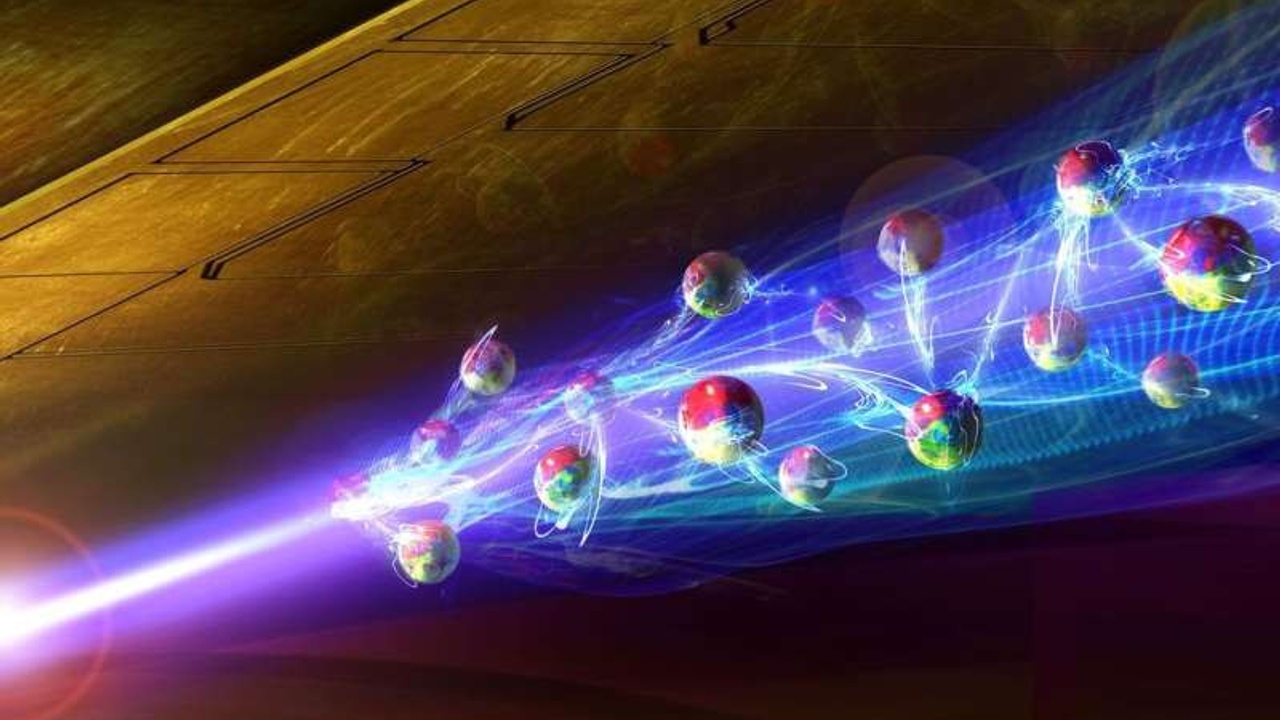Science News
& Faculty Articles
Why is Energy Transfer in Photosynthesis So Efficient?

Numerical simulations have found that excitons can become a BEC -Bose Einstein Condensate- and this mechanism would explain the high efficiency of energy transport in photosynthesis of plants. The exciton-condensate mechanism could be harnessed to enhance energy transfer in synthetic systems.
By Dr. Inés Urdaneta, Physicist at Resonance Science Foundation
Photosynthesis is an extremely efficient biological process in plants, algae, and some types of bacteria, that utilizes light energy and carbon dioxide (CO2) to produce oxygen (O2) and chemical energy stored in glucose (a sugar).
Numerical simulations are showing that Bose Einstein condensates may be the key for such a high efficiency, and this phenomenon challenges what modern physics defines as possible regarding fundamental mechanisms in biological systems as it implies a quantum process that is not expected to happen at room temperature and in disordered (noisy) conditions that potentially degrade any quantum...
Another Validation of Haramein’s Theory: Physicists Confirm that Black Holes Admit Vortex Structure!

By Dr. Inés Urdaneta, Physicist at Resonance Science Foundation
Understanding the microscopic structure of black holes has been a challenge for physicists. The recent work from Gia Dvali, Florian Kühnel and Michael Zantedeschi entitled Vortexes in Black Holes, and published in Physics Review Letters, is providing a framework from which such understanding can be attained, while at the same time validating Nassim Haramein’s holographic approach.
Dvali et al. propose that black holes could be understood as a graviton condensate at the critical point of a quantum phase transition, based both on a graviton-condensate description of a black hole and on a correspondence between black holes and generic objects with maximal entropy compatible with unitarity; the so-called saturons. Saturons are a saturated state collective behavior of gravitons, i.e., a Bose Einstein Condensate (BEC) of gravitons, situation that is possible when gravitons are confined in a volume of space,...
Probing Quantum Magnetism with Near Absolute Zero SU(N) Atoms

By Amal Pushp, Affiliate Physicist at the Resonance Science Foundation
Absolute zero is the temperature at which all physical dynamics come to a halt. The laws of physics however do not allow us to attain absolute zero. This fact unfolds from a fundamental feature of quantum mechanics according to which fluctuations are always occurring at the quantum level and the quantum particles always have enough energy to continue their dynamical motion unlike in a classical system. Such a system contains quantum mechanical energy even at absolute zero and this energy is technically called zero-point energy. However, physicists can achieve temperatures close to absolute zero in an advanced laboratory. Examples where working near absolute zero is common include quantum phenomena like Bose-Einstein condensation, superconductivity, superfluidity, etc.
Now in yet another situation, physicists from Japan and the US have succeeded in cooling atoms of Ytterbium (an element also used in making atomic...
First Observation of an Exotic Light-Matter Coupled State

By Amal Pushp, Affiliate Physicist at the Resonance Science Foundation
Light and matter are an amazing ensemble and laden with a lot of interesting physics. Scientists have always pondered upon new and exciting effects that could be created using light-matter interaction and one of the related curiosity-driven questions is whether light and matter can coexist as a single entity. New research conducted at TU Wien’s Vienna Center for Quantum Science and Technology (VCQ) in collaboration with the University of Innsbruck shows the possibility that it might do after all [1].
Utilizing the high polarizing ability of a laser, atoms were configured in a way that measurements resembled, in an unprecedented scenario, a special state of light and matter, much like a light-matter molecule.
Generally, dynamic atoms are in a high energy state which makes it difficult for a measurement to reveal an inherent attractive force between them. In order to overcome this challenge, the researchers...
First Continuous Matter Wave Laser-Analog Generated from Regenerative Bose-Einstein Condensation Technique

By: William Brown, Biophysicist at the Resonance Science Foundation
Lasers are a well-known technology that have found myriad applications in all aspects of our lives, from sensors used in homes and stores, to advanced physics probes like LIGO that detected the first gravitational waves, and of course information technologies involving memory storage, retrieval, and data transmissions, to name but a few examples. Laser is an acronym for light amplification by stimulated emission of radiation, a technique that utilizes the wave-like nature of light, in which photon wave-packets that are of the same wavelength and phase (matching wave crest-to-crest and trough-to-trough, called constructive interference) can be combined and amplify the magnitude or strength of the light. The electromagnetic radiation is in a coherent state, and this is possible as well because photons obey what are known as Bose statistics, a quantum mechanical property of matter that allow Bose particles...
Fractal Behavior Found in High Energy Collisions and Bose Einstein Condensate Formation!

By Inés Urdaneta, Physicist at Resonance Science Foundation
In recent years, an extraordinary and unexpected feature in high energy collisions (collisions of subatomic particles at extremely speeds, performed mainly at CERN) has surprised the physicists working on the nucleonic scale: a fractal pattern that had been observed intermittently in high energy experimental data (particularly in the behavior of the particle multiplicity against the collision energy), can be accounted for by the Yang-Mills Field (YMF) equations, which recently have been shown to present fractal structure, as claimed by the authors of the study.
These theories that apply to subatomic particles, such as protons, electrons and quarks, belong to the category of distinguishable particles called fermions, and the way these particles distribute in different energy levels (also known as states) is described by Fermi Dirac Statistics. Fermi Dirac statistics is commonly replaced by the classical...



